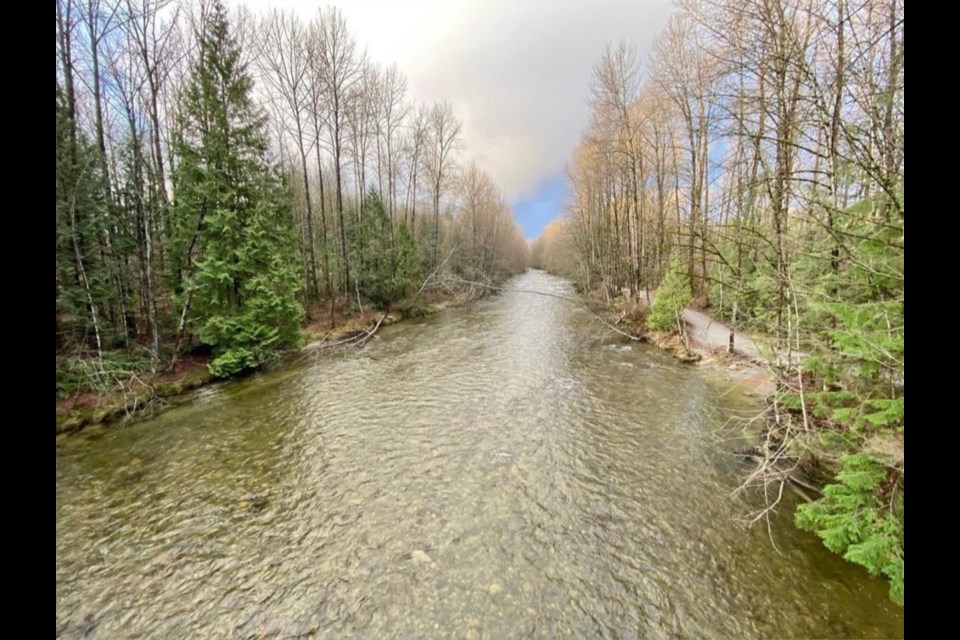BC Hydro is warning residents of the Tri-Cities it will release high volumes of water into the Coquitlam River over the next two months as it begins work to replace ageing tunnel infrastructure key to prevent flooding and ensure the future of Metro Vancouver's water.
At the heart of the retrofit is replacing a set of 100-year-old gates that manage the transfer of water from Coquitlam Reservoir to Buntzen Lake. The so-called Coquitlam-Buntzen diversion tunnel is the primary mechanism BC Hydro has to manage water levels in Buntzen Lake — a recreational hotspot — and Coquitlam Reservoir, which is positioned as a linchpin to ensure Metro Vancouver has a clean and abundant source of water over the next 50 years.
The work is slated to be completed across three two-month closures, with the first scheduled to begin Jan. 4 and continue until March 2.
During that period, up to an extra 30 cubic metres per second of water will be added to the Coquitlam River. The extra volume is roughly equivalent to having seven African Bush elephants dive off the Coquitlam dam every second. But that volume could change depending on weather conditions.
Three gates up to “modern-day standards and seismic operability” will be installed to ensure the smooth flow of water through the tunnel. New control equipment will also be added to allow remote monitoring of the facilities, which haven't been updated since 1955.
BC Hydro has been lowering levels in the reservoir since October, a standard preparation for an inflow of winter precipitation. But with the closing of the tunnel, no water can be transferred to Buntzen Lake.
“So to maintain the reservoir level to prevent overflow and also for the safety of the workers during construction, water may need to be diverted to the Coquitlam River,” wrote BC Hydro spokesperson Mora Scott in an email.
Mora added that “public safety is a top priority” and that “out of an abundance of caution” the utility would install safety signage at various points along the river’s edge.
TUNNEL THAT BROUGHT LIGHT AND DEATH
Beyond its role as a conduit to manage an increasing share of Metro Vancouver’s drinking water, the Coquitlam-Buntzen tunnel set the groundwork for the first major hydro project in the province, serving the first hydro-fed dynamos to light the streets of the Lower Mainland.
It’s been nearly 115 years since the Buntzen tunnel was completed, linking the southwest shore of Coquitlam Lake to the northeast shore of Buntzen Lake (then two lakes known as Trout Lake and Lake Beautiful).
But while today stringent safety oversight measures have been put into place to protect workers, at the turn of the 20th Century things were different.
Men died and they died in droves, according to historical documents dug up by BC Hydro Pioneers, an organization of retired workers. When workers were killed, company foreman didn’t give them time to mourn, instead forcing them to keep working, writes Will Koop in a 1994 history for the Port Moody Ecological Society.
In all, 103 men were thought to have lost their lives — their names were never recorded, only mentioned in passing through progress reports sent back to the parent company back in England.
It would become the deadliest work project in the history of the Tri-Cities.
By the summer of 1905, 200 guests, including the premier, chief justice, several cabinet ministers, the mayors of three cities, and the most prominent businessmen of the time gathered to see the first rush of water to pour down the tunnel, eventually reaching the newly built 1,500 Kw Power House No. 1 on the shores of the Indian Arm.
At the time, the project was an ambitious undertaking and is thought to be the first tunnel of its kind and length constructed in North America. “It was an engineering marvel, an amazing feat,” wrote Koop, noting that when the two ends of the tunnel linked up on April 27, 1905, the error in the line was a mere 7/8 inch.
The Lieutenant Governor turned on the water with a golden key, it fell 432 feet through the tunnel, from Coquitlam Lake to the newly renamed Buntzen Lake and down a series of tubes to sea level where they would feed the powerhouse.
For the first time, hydro-electricity would feed New Westminster’s streetcars instead of steam. Built on the back of over 100 dead workers, the moment marked a massive industrial transformation in the province and hailed in a new era of industrial-scale hydro-power that would reshape the natural environment.
FUTURE IMPACT
As the Coquitlam Reservoir has moved from a major electricity generator to a vital source of water for the Metro region, there have also been parallel projects to rejuvenate the watershed’s natural ecosystem, something that was decimated when the dam was first built.
Chief among conservation efforts have been plans to reintroduce a variety of salmon species to the Coquitlam River both above and below the dam.
But when asked whether the surges in water would affect those plans, BC Hydro spokesperson Scott Mora said: “Our modelling (which helps us know when to avoid releasing water and how much can be released) suggests there will be no impact to fish or fish habitat.”
The models, added Mora, were reviewed by the Department of Fisheries, the Ministry of Environment and local First Nations.
More upgrade work is planned on the tunnel in August and September 2021, and between Jan. 4 and March 2, 2022.




